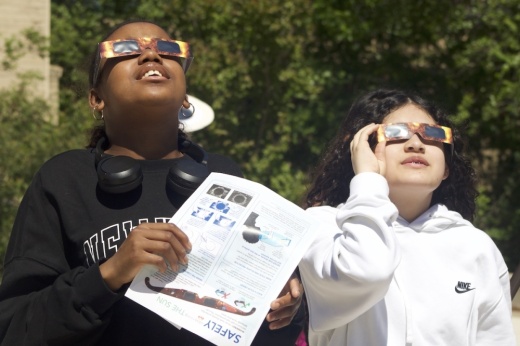“This program is to really help inspire science, especially in underserved communities,” volunteer Christopher Bernhardt said.
What happened
Bernhardt and Arizona State University student Savannah Goswick guided students at the all-girls middle school through a series of interactive activities, explaining the science behind the total solar eclipse. The demonstration ended with students looking at the sun through a telescope, and even found a sunspot—a part of the sun’s surface that is cooler and appears darker, Bernhardt said.

Importantly, Bernhardt demonstrated how to use eclipse glasses, which have solar filters to safely view the sun. The students were told to look down and put the glasses on before looking up at the sky and look down again before removing them.

AISD schools will be open April 8, similar to neighboring districts Eanes ISD and Round Rock ISD. Others, however, will be closed, such as Dripping Springs ISD and Del Valle ISD, citing increased traffic that day.
All AISD students will receive eclipse glasses Monday, and teachers will engage their students in educational activities related to the eclipse.
Also of note
Travis County officials declared a local disaster for the eclipse to increase access to emergency services as the region is anticipating an influx of visitors that may impact traffic and cellular services.





